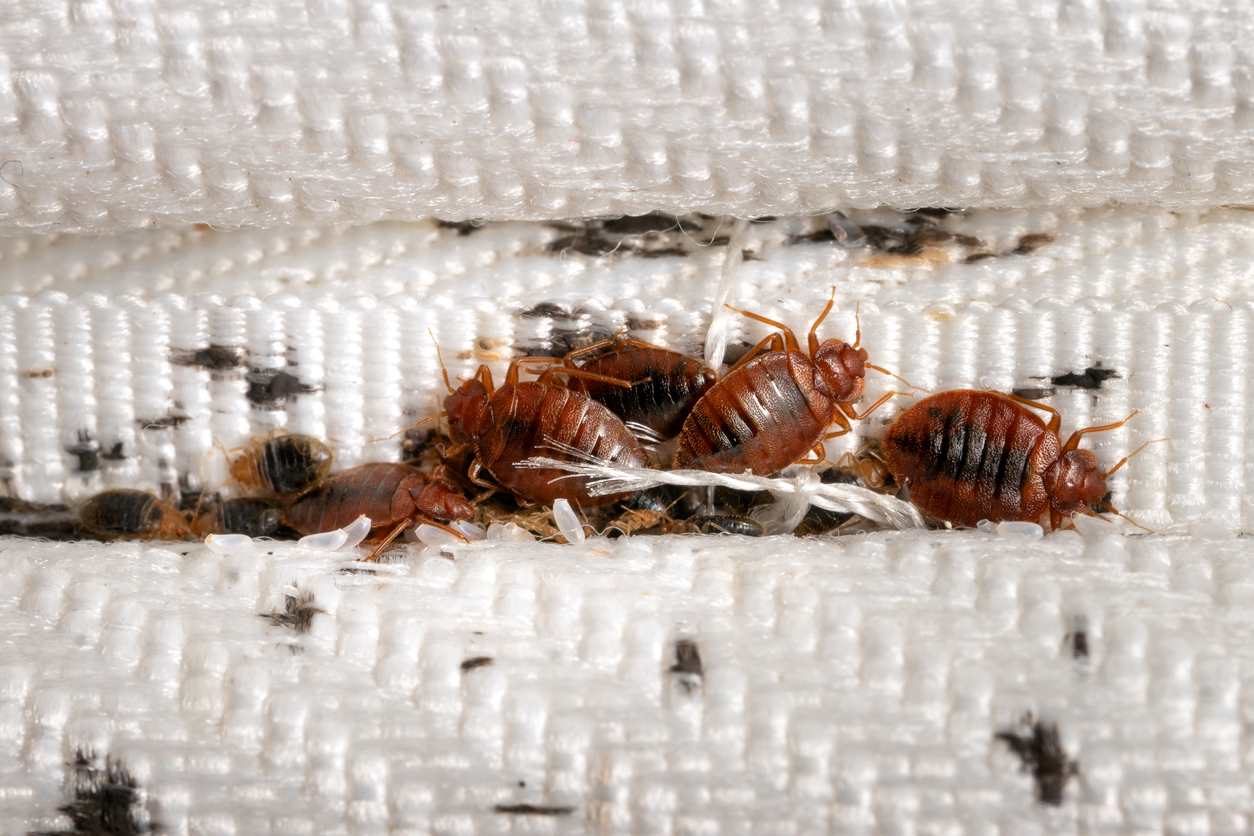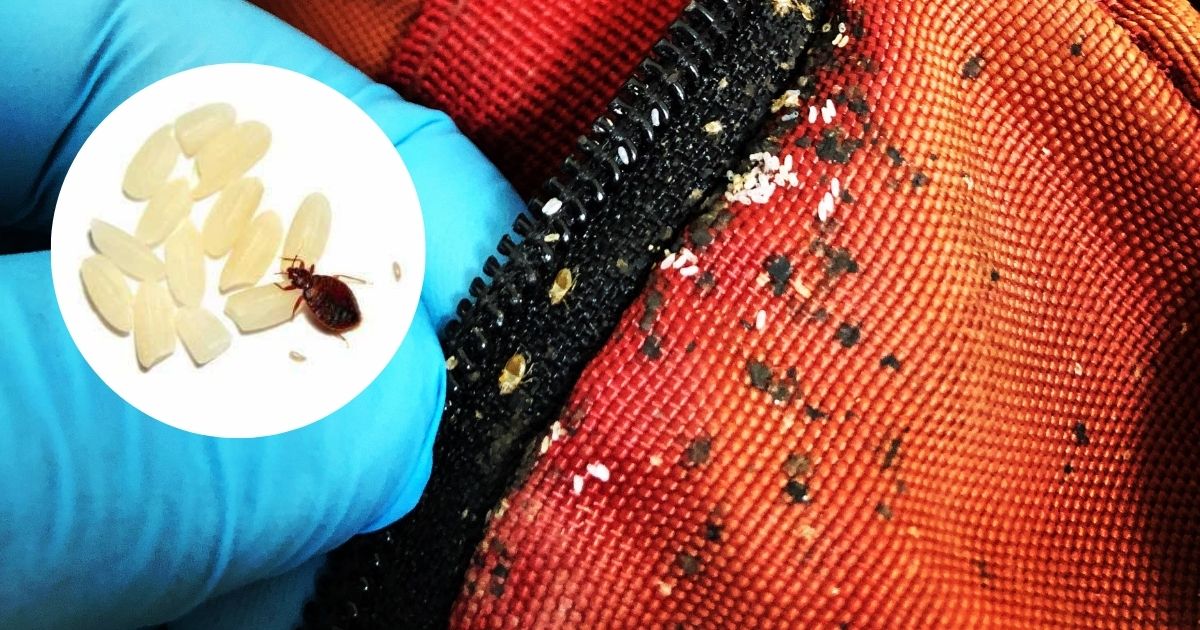Bed bugs can lay eggs as early as 5 weeks old. Once they reach maturity, typically around 8 weeks, they can lay eggs every day if they have access to a blood meal.
Bed bugs have become a prevalent nuisance in many homes, infesting bedding, furniture, and other areas where they can hide and breed. These pests are known for their ability to multiply quickly and can cause significant distress to homeowners. Understanding their life cycle and reproductive habits is essential for effective control and prevention.
We will explore the age at which bed bugs are capable of laying eggs, as well as the factors that influence their reproductive behavior. By delving into these aspects, we can gain valuable insights into how to manage and eradicate these persistent pests effectively.
Bed Bug Growth Stages
Understanding the growth stages of bed bugs is crucial for effective pest control. Each stage of a bed bug’s life cycle brings unique challenges and risks. In order to combat bed bug infestations, it’s necessary to comprehend the different growth stages and their characteristics.
Egg Stage
The first stage of a bed bug’s life cycle is the egg stage. Bed bug eggs are tiny, approximately 1mm in length, and are often laid in clusters, typically in hidden locations such as mattress seams, furniture cracks, or behind wallpaper.
It takes about 6-10 days for bed bug eggs to hatch. Once hatched, the nymphs emerge and begin searching for their first blood meal to continue their growth process.
Nymph Stage
After hatching, bed bugs enter the nymph stage. Nymphs resemble smaller versions of adult bed bugs but are not yet sexually mature. They require a blood meal at each stage to molt and progress to the next stage of growth. There are five nymphal instars before reaching adulthood.
During the nymph stage, bed bugs are translucent and lighter in color, gradually darkening as they feed and molt. They are difficult to detect due to their small size and ability to hide in tiny cracks and crevices.
Adult Stage
The final growth stage of bed bugs is the adult stage. Adult bed bugs are reddish-brown and approximately the size of an apple seed, making them more visible than nymphs. Once they reach adulthood, bed bugs are capable of reproducing, with females laying hundreds of eggs over their lifespan.
Adult bed bugs require regular blood meals to survive and reproduce, making them a persistent and challenging pest to control.
Egg Laying Age
Bed bugs are notorious for their fast reproductive abilities, and the age at which they can start laying eggs is a crucial factor in understanding and controlling their population. In this section, we’ll explore the egg laying age of bed bugs, including their mating behavior and the factors that influence when they start laying eggs.
Bed Bug Mating Behavior
Bed bugs reproduce through a process called traumatic insemination, where the male bed bug pierces the female’s abdomen to inseminate her. This unique mating behavior allows female bed bugs to store sperm for extended periods, enabling them to lay eggs multiple times without needing to mate again.
Factors Affecting Egg Laying Age
Several factors can influence the egg laying age of bed bugs, including temperature, access to blood meals, and overall environmental conditions. Warmer temperatures can expedite the development of bed bugs, including their ability to start laying eggs at an earlier age. Additionally, an abundant supply of blood meals allows bed bugs to mature more quickly, leading to earlier egg laying.
Egg Production
Egg Production:
Frequency Of Egg Laying
Bed bugs are known for their rapid reproduction, with females capable of laying eggs frequently.
Number Of Eggs Laid Per Cycle
A female bed bug can lay anywhere from 1 to 12 eggs per day, totalling up to hundreds in her lifetime.

Credit: www.planetnatural.com
Egg Incubation Period
Bed bugs are capable of laying eggs after five weeks of age. The incubation period for bed bug eggs typically ranges from six to ten days before hatching. It is important to take swift action to eliminate bed bugs before their eggs hatch and the infestation grows.
Introduction
The egg incubation period is a crucial stage in the life cycle of bed bugs. Understanding how long it takes for bed bug eggs to hatch can provide valuable insights into the infestation process. In this article, we will delve into the egg incubation period of bed bugs and explore the various environmental factors that can impact the incubation process.
Environmental Factors Influencing Incubation
Several environmental factors play a significant role in determining the duration of the egg incubation period for bed bugs. These factors can either prolong or expedite the hatching process. Let’s dive into some of these key factors:
- Temperature: Bed bug eggs require optimal temperatures to hatch successfully. Females typically lay their eggs in areas where the temperature ranges between 70 to 80 degrees Fahrenheit (21 to 27 degrees Celsius). This temperature range promotes faster egg development and shorter incubation periods.
- Humidity: Adequate humidity levels also influence the incubation period of bed bug eggs. High humidity levels can speed up the hatching process, while lower levels may delay egg development. Bed bug eggs require relative humidity above 55% for optimum hatching conditions.
- Availability of Blood Meal: Bed bug females must feed on blood before they can lay eggs. The availability of a blood meal directly affects the development and hatching speed of the eggs. A well-fed female bed bug is more likely to produce viable eggs with shorter incubation periods.
- Disturbances and Movement: Constant disturbances or movement in the infested area can disrupt the incubation process. Bed bugs may delay or suspend egg hatching in response to disturbances. Therefore, reducing physical disturbances can help prevent prolonged incubation periods and further infestation.
Impact On Infestation Rate
The duration of the egg incubation period can significantly impact the infestation rate of bed bugs. A shorter incubation period allows for faster population growth and increased infestation levels. Bed bugs reproduce rapidly, and their ability to lay hundreds of eggs during their lifetime can quickly escalate an infestation.
By understanding the factors that influence the incubation period, it becomes possible to devise effective strategies for eliminating bed bugs. Properly controlling the environmental conditions and eliminating their preferred habitats can help disrupt the incubation process and minimize infestation rates.
Preventing Bed Bug Reproduction
Bed bugs are notorious for their ability to reproduce rapidly, multiplying their numbers astonishingly quickly. Therefore, it is essential to take proactive measures to prevent bed bug reproduction in your home or business. By doing so, you can effectively control their population and minimize the chances of a full-blown infestation. In this section, we will explore some early detection methods and efficient bed bug removal techniques to help you stop these pesky creatures from reproducing.
Early Detection Methods
Early detection is crucial in preventing bed bug infestations from spreading and reproducing. By catching them early, you have a better chance of eliminating them before they have the opportunity to lay eggs and increase their numbers. Here are some effective early detection methods to consider:
- Regularly inspect your bedding: Frequently examine your mattress, sheets, and pillowcases for any signs of bed bug activity. Look for small dark spots, blood stains, or shed exoskeletons that may indicate their presence.
- Use mattress encasements: Covering your mattress and box springs with bed bug-proof encasements creates a barrier that prevents bed bugs from invading these areas and laying eggs.
- Set up interceptors: These specialized traps are placed beneath furniture legs and intercept bed bugs as they attempt to crawl up onto beds or other furniture. By trapping them, you can prevent their reproductive cycle from continuing.
Efficient Bed Bug Removal Techniques
If you discover a bed bug infestation, it is crucial to act promptly and implement effective removal techniques to prevent these pests from reproducing further. Here are some efficient methods to consider:
- Thoroughly clean and vacuum: Regularly vacuum all upholstered furniture, carpets, and cracks and crevices where bed bugs may hide. Dispose of the vacuum bag immediately in a sealed plastic bag to prevent bed bugs from escaping.
- Wash and dry at high temperatures: To eliminate any bed bugs hiding in infested clothing, bedding, or linens, wash them in hot water (around 120°F) and tumble dry them on high heat.
- Freeze infested items: If possible, freezing infested items that cannot be laundered is an effective way to kill bed bugs. Place the items in sealed plastic bags and leave them in a freezer set to 0°F for at least four days.
Remember, preventing bed bug reproduction requires a comprehensive approach that combines early detection methods and efficient removal techniques. By following these steps diligently, you can significantly reduce the chances of bed bugs laying eggs and multiplying within your living or working spaces.

Credit: www.terminix.com
Health Risks Associated
Bed Bug Bites And Allergic Reactions
Bed Bug Bites: Cause red, itchy welts that may lead to skin infections if scratched.
Allergic Reactions: Some individuals can experience severe allergic reactions to bed bug bites.
Mental Health Impact Of Infestation
Stress and Anxiety: Constant fear of bed bugs can lead to heightened stress levels.
Insomnia: Disrupted sleep patterns due to bed bug infestations can cause insomnia.

Credit: www.cleggs.com
Frequently Asked Questions For How Old Do Bed Bugs Have To Be To Lay Eggs?
How Long Does It Take For Bed Bugs To Lay Eggs?
Bed bugs can start laying eggs as early as 4 to 6 weeks after hatching. The female bed bugs can lay up to 5 eggs a day and up to 500 eggs in her entire lifetime. It’s important to take immediate action if you suspect a bed bug infestation to prevent their continuous egg-laying cycle.
How Many Eggs Do Bed Bugs Lay At Once?
A female bed bug can lay around 1 to 5 eggs per day. In her entire lifespan, which can be up to one year, she can lay approximately 200 to 500 eggs. The eggs are tiny, about the size of a pinhead, and are usually laid in small cracks and crevices close to their hiding spots.
How Long Does It Take For Bed Bug Eggs To Hatch?
Bed bug eggs typically hatch within 6 to 10 days, but this time frame can vary depending on various factors like temperature and humidity. Once the eggs hatch, the baby bed bugs, known as nymphs, go through five molting stages before becoming adults.
Conclusion
As bed bugs mature, they become capable of reproduction. Understanding their lifecycle aids in prevention measures. Regular inspections and timely actions are vital in controlling infestations. Stay vigilant to avoid the potential hazards posed by these pesky creatures. Prevention is always better than dealing with an infestation.
Related posts:

I’m MD Tanvir, and I bring years of expertise gained from working closely with pest control companies to the forefront. My journey in the industry has inspired me to launch Bug Battler, a platform aimed at equipping people with the know-how to combat pests autonomously. Through Bug Battler, I aim to empower individuals with practical insights to tackle pest infestations effectively.

